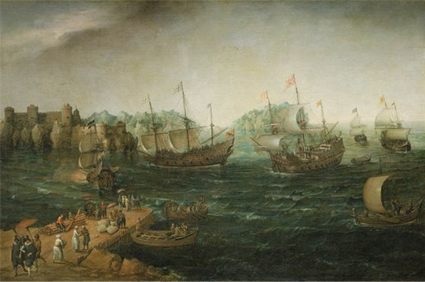When the National Maritime Museum in Greenwich opened to the public in 1937, its core holdings came from three great private collections of the time, namely those of Sir James Caird, Sir Bruce Ingram and Captain Eric Palmer. The works amassed by the museum’s principal benefactors were put together with the historic Greenwich Hospital Collection as well as pictures owned by the Admiralty. The result was an unparalleled collection of marine paintings, prints and drawings – a collection like no other, that enabled the scholar or enthusiast to trace the “sea piece”, as such works were once called, from its origins in Flanders and Holland, to its transformation in eighteenth- and nineteenth-century Britain and France, and beyond.
The National Maritime Museum’s premises, which include the Queen’s House at Greenwich, are elegant but not enormous, which means that much of the collection has had to be kept in store. Over time, it has become a rather neglected national resource, its problems perhaps compounded by a growing indifference among the modern, landlubberly British to the days when their ancestors were proud “to rule the waves”. “Turmoil and Tranquillity”, the main summer exhibition at the Queen’s House, aims to put a stop to all that – to call attention to the richness of the musuem’s holdings and put it back on the sea-chart of public awareness.
The focus of the show is the museum’s collection of seventeenth-century Dutch and Flemish marine art, which is the largest and, unquestionably, the most important of its kind anywhere in the world. Its four hundred pictures and many more prints and drawings have been distilled to around a hundred actual exhibits, telling the story of marine painting’s development from its beginnings in Northern Europe through to its development, in the hands of the leading artists...


